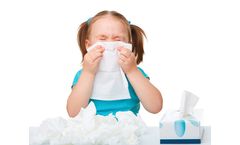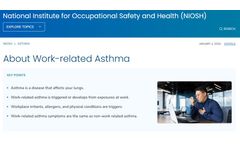Dust Mites Articles & Analysis: This-Year
7 news found
Some examples listed by NIOSH include: • Animal dander, insects, and dust mites • Chlorine-based cleaning products • Cigarette smoke • Materials from cockroaches • Cold air • Dust from wood, ...
This dust can contain a number of different substances, including numerous allergens. These frequently include allergens from dust mites, cockroaches, pollen, pets, rodents, mold, latex, and other sources. Unfortunately, this same dust can in some circumstances contain more than just aeroallergens. ...
These vary from person to person, but some of the most common ones include exposure to tobacco smoke, dust mites, outdoor air pollution, chemical irritants, cockroach allergen, pets, mold, nitrogen dioxide, and smoke from burning wood or grass. ...
The BALB/c mice, known for their methacholine hyperresponsiveness, exhibited greater lung compliance compared to the stiffer lungs of C57BL/6 mice, as shown in Roja-Ruiz et al (2023). Intranasal exposure to house-dust mite (HDM) was used to induce experimental asthma, enabling the study of respiratory mechanics, and airway smooth muscle (ASM) contraction in these ...
They offer testing for not only pet allergens, but also for dust mite, rodent, cockroach, mold, latex, and other allergens, respiratory irritants, and asthma triggers. ...
Some examples listed by NIOSH include: • Animal dander, insects, and dust mites • Chlorine-based cleaning products • Cigarette smoke • Materials from cockroaches • Cold air • Dust from wood, grain, ...
Some examples listed by NIOSH include: Animal dander, insects, and dust mites Chlorine-based cleaning products Cigarette smoke Materials from cockroaches Cold air Dust from wood, grain, flour, or green coffee beans Gases such as ozone Additional examples of triggers shared by the agency include irritant chemicals, metal dust, ...







